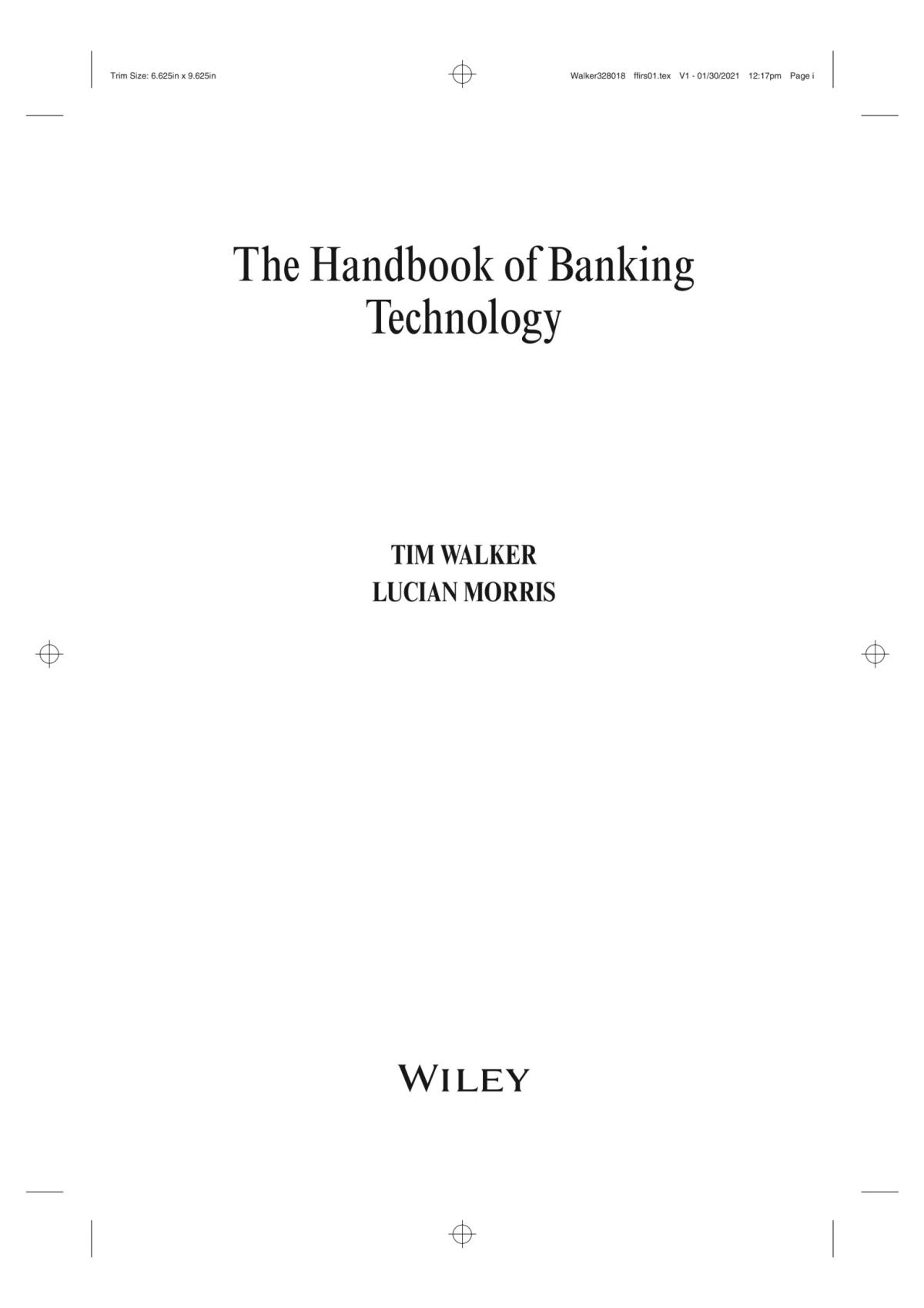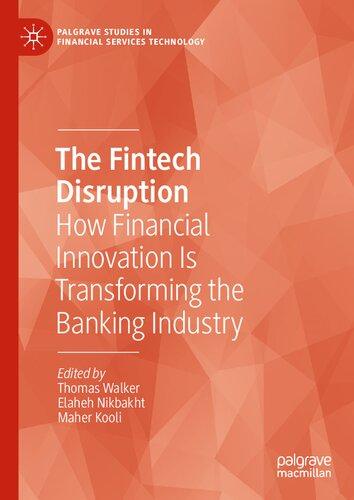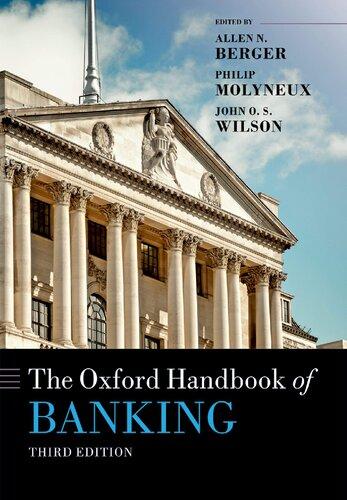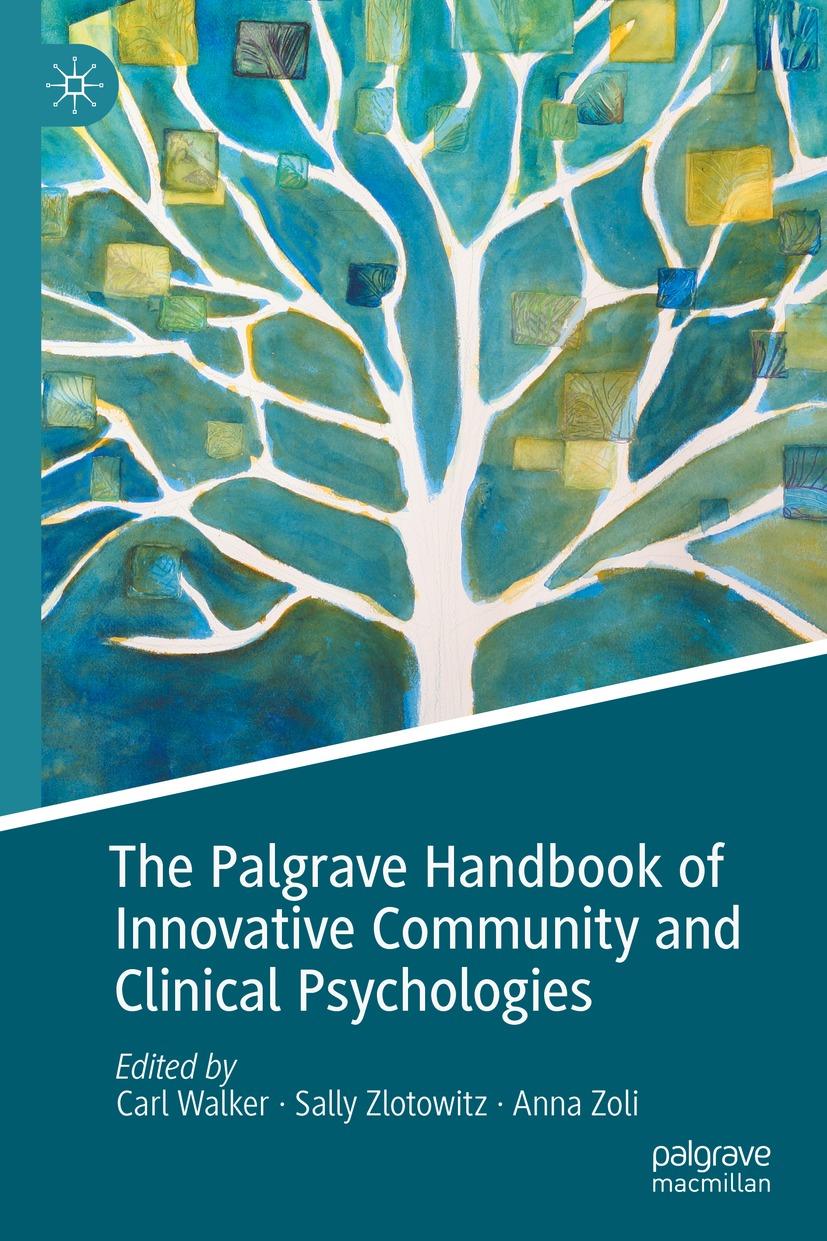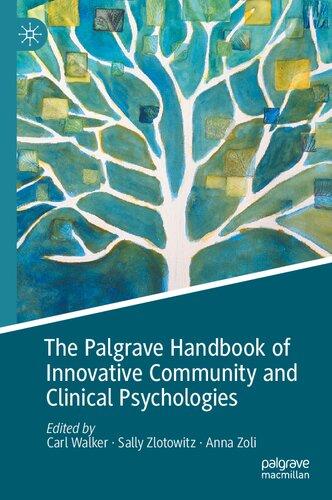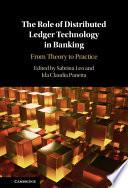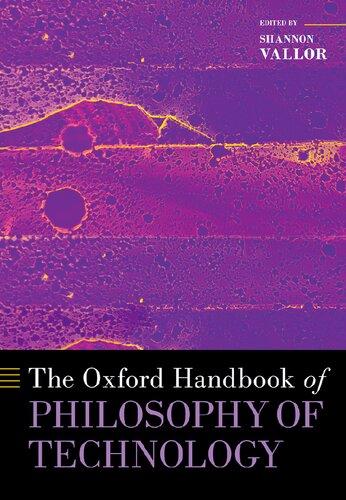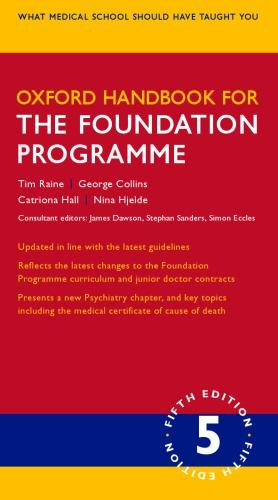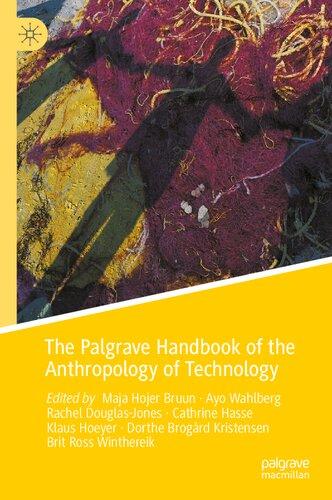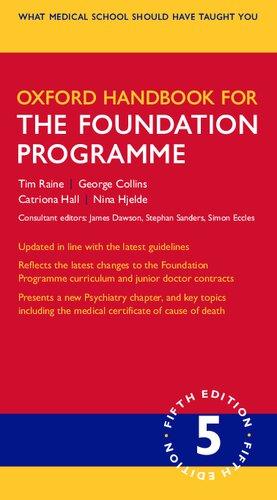TheHandbookofBanking Technology
TIMWALKER LUCIANMORRIS
Thiseditionfirstpublished2021. ©2021TimWalkerandLucianMorris
Registeredoffice
JohnWiley&SonsLtd,TheAtrium,SouthernGate,Chichester,WestSussex,PO198SQ,UnitedKingdom
Fordetailsofourglobaleditorialoffices,forcustomerservicesandforinformationabouthowtoapplyfor permissiontoreusethecopyrightmaterialinthisbookpleaseseeourwebsiteat www.wiley.com
Allrightsreserved.Nopartofthispublicationmaybereproduced,storedinaretrievalsystem,or transmitted,inanyformorbyanymeans,electronic,mechanical,photocopying,recordingorotherwise, exceptaspermittedbytheUKCopyright,DesignsandPatentsAct1988,withoutthepriorpermissionofthe publisher.
Wileypublishesinavarietyofprintandelectronicformatsandbyprint-on-demand.Somematerialincluded withstandardprintversionsofthisbookmaynotbeincludedine-booksorinprint-on-demand.Ifthisbook referstomediasuchasaCDorDVDthatisnotincludedintheversionyoupurchased,youmaydownload thismaterialat http://booksupport.wiley.com.FormoreinformationaboutWileyproducts,visit www.wiley .com.
Designationsusedbycompaniestodistinguishtheirproductsareoftenclaimedastrademarks.Allbrand namesandproductnamesusedinthisbookaretradenames,servicemarks,trademarksorregistered trademarksoftheirrespectiveowners.Thepublisherisnotassociatedwithanyproductorvendormentioned inthisbook.
LimitofLiability/DisclaimerofWarranty:Whilethepublisherandauthorhaveusedtheirbesteffortsin preparingthisbook,theymakenorepresentationsorwarrantieswithrespecttotheaccuracyorcompleteness ofthecontentsofthisbookandspecificallydisclaimanyimpliedwarrantiesofmerchantabilityorfitnessfora particularpurpose.Itissoldontheunderstandingthatthepublisherisnotengagedinrenderingprofessional servicesandneitherthepublishernortheauthorshallbeliablefordamagesarisingherefrom.Ifprofessional adviceorotherexpertassistanceisrequired,theservicesofacompetentprofessionalshouldbesought.
LibraryofCongressCataloging-in-PublicationDataisAvailable
ISBN978-1-119-32801-8(hardback)ISBN978-1-119-32810-0(ePub) ISBN978-1-119-32806-3(ePDF)ISBN978-1-119-32809-4(Obook)
CoverDesign:Wiley
CoverImage:©Phaigraphic/Shutterstock
Setin10/12ptTimesNewRomanMTStdbySPiGlobal,Chennai,India 10987654321
ToDebbie,Tom,HollyandEmily. –TJW
ToJo,CameronandAmelie. –LAM
Preface ix
CHAPTER1 Introduction1
1.1BankingandtheRiseofTechnology1
1.2TheChallengesofTechnologyinLargeBanks3
1.3NavigatingThisBook4
1.4References7
CHAPTER2 TheHistoryandCurrentStateofBanking8
2.1ABriefHistoryofBanking8
2.2Cash,GoldandDigitalMoney11
2.3BranchCentrism14
2.4BankingConsolidation16
2.5TheDevelopmentofModernBankingProducts andServices24
2.6DevelopmentsinBankingTechnology33
2.7TheChallengesofTechnologyinBanking39
2.8NewBankingModels41
2.9TheImpactofthe2008BankingCrisis46
2.10TheCurrentStateofBanking50
2.11FurtherReading55
2.12References56
CHAPTER3 AnIntroductiontoBankingTechnology67
3.1Introduction67
3.2AModelofaSimpleBank67
3.3TheCoreBankingPlatform68
3.4DatabaseArchitectures72
3.5MakingPlatformsHighlyAvailable80
3.6PlatformArchitectures85
Preface
Ourgoalinwritingthisbookistobringaboutabetterunderstandingofthecomplexworldoftechnologyinbanking.Ofcourse,therearemanybookscovering justabouteveryaspectoftechnology,frommainframecomputerstocloudcomputing andfromthefirstprogramminglanguagessuchasCOBOLtothelatestsuchasGo. However,booksthatcoverhowtechnologyisusedinthebankingindustryarerareto non-existent,whichmeansthatthoseworkingintheindustryhavehadtorelyondocumentationsuppliedbyvendors,trainingcourses,theInternetand,ofcourse,bytalking withtheircolleaguesinthetechnologyfunction.Throughoutourcareersworkingfor manydifferenttypesofbankingandpaymentbusinesses,fromoneofthesmallestwith asinglebranchtothelargestinternationalbanksandvariousstart-upsalongtheway, wefounddocumentationsuppliedbyvendors,withsomenotableexceptions,isoften incompleteorsuperficial,onlyavailableafterattendingatrainingcourseoronlyaimed atdevelopers.Attendingtrainingcoursesisoftenexpensiveintermsofbothmoneyand timeandInternetresourcescanbepatchy,ofvariablequalityandsometimesjustwrong. Oneofthereasonswedecidedtowritethisbookwastofillthisgap.
Thisbookisthereforetargetedatallreaderswithaninterestinbankingandtechnology,notjusttechnologists.Itprovidesanintroductiontothehistoryofbankingandan analysisofthecurrenttechnologylandscapethatsupportsthemajorfunctionsofmodernbanks,andlooksattheopportunitiesandrisksposedbythedigitalerathatweare in.Toreadthisbookyoudonothavetobedeeplytechnical,norfocusedonlyontechnology.Insteadthebookaimstoprovideallreaderswithacommonunderstandingof theopportunitiesandchallengesrelatedtotechnologythatallbankingbusinessesmust address.
Ofcourse,ifyouareanexecutiveormanagerinthebankingindustrywhowishesto improveyourunderstandingofthetechnologyusedintheindustry,thisbookisparticularlyrelevant.Itshouldalsoprovideagoodintroductionforthosewhoareembarking onacareerintechnologyinthebankingindustryorwhohavechangedrolesinabanking technologyfunctionandneedtofamiliarisethemselveswiththetechnologyusedintheir newarea.It’salsousefulforthoselookingtolaunchanewbankorfintechstart-up,even ifonlytoillustratehowtechnologyshouldnotbeimplemented!
Wecoverretailandcommercialbanking,whichincludesbankaccounts,securedand unsecuredlending,payments,andpaymentcards,acrossallthechannelsfrombranches tomobilebankingthatareincommonuse,andallofthefunctionsthatyou’dexpect tofindinamodernbank,fromoperationsandfinancetomarketing.Wehavefocused onthetechnologybehindbasicbankaccounts,payments,andcustomerinteraction andbeenlessdetailedabouttheplatformsthatsupportspecialisedbankingproducts. Wedon’tcoverinvestmentbanking,investmentmanagement,assetmanagementor
insurance,whichwouldprobablyrequirebooksintheirownright.Wehavedrawnon ourexperienceinthebankingsectorinEurope,theMiddleEast,andNorthAmerica, althoughreaderswillquicklyunderstandthatwetendtodrawmostdeeplyonour experienceintheUK,wherewehavespentmostofourcareers.
Ofcourse,bankingbusinessesareoftencomplexandthetechnologytheyuseisalso complex,wide-rangingandanythingfromfiveormoredecadesoldtorightuptodate. Ouraimistoprovideanoverviewofthetechnologyinusesothatifyouareamanager orexecutiveoutsidethetechnologyfunctionyoushouldbeabletohavemoreinformed conversationswithyourcolleaguesinthetechnologyfunction,andifyouareinthetechnologyfunctionyoushouldbetterunderstandthewidercontextoftheworkyouare doingormanaging.Ifyouneedtogetmoretechnical,youcanconsultthereferencesand furtherreadingliststhatweprovide.
Aswearecoveringtechnologyinthebankingindustry,weoftentendtousetheterm bank wheninrealitywhatwehavewrittenappliestobusinessesthatprovidebanking servicesandwhichmaynot,strictlyspeaking,bebanks.IfweweretofollowtheUK’s bankingregulators,anorganisationcanonlybecalledabankifitislicensedtotake deposits.Forexample,creditcardissuersandlendersthatdonottakedepositsarenot banksbuttheydoprovidebankingservices,andmanyaspectsofwhatwehavewritten inthisbookarealsorelevanttothem.Giventhatpaymentsareintegraltobanking,we havedevotedachaptereachtocardpaymentsandtointerbankpayments.
Acknowledgements
Westartedthinkingaboutandthenwritingthisbookseveralyearsago.However, progresswaspatchyasworkandfamilylife(includingLucian’scyclingaccidentsandthe deathofTim’steenagesonfromleukaemia)tookpriority.Bythestartof2020wehad writtenlessthanathirdofthefinalmanuscript.However,wedecidedtotakeadvantage ofthelockdownduetotheCovid-19pandemictofocusoncompletingthebook.Our familiessustaineduswhilewebeaveredaway,forwhichwesayahugethankyou.
Althoughweworkedtogetherpreviously,thisexercisehastaughtusthat co-authoringabookcanbechallengingbutisultimatelyrewarding.Reviewing eachother’swritingmadeusrealisewehaddifferentwritingstylesandpointsofview onvarioustopics,andthatsometimeswhatoneortheotherofushadwrittenwasjust plainwrong.Attimeswehaveevenbeenalittleshortwitheachother.However,we werealwaysabletodiscussandresolvethesedifferenceswithequanimitywhilealsostill strivingforqualityandcompleteness.Iftherearemistakesinthisbook,weacceptjoint responsibility.
Finally,thelasttwochaptersarerelativelyopinionated.Thereaderisperfectlyentitledtodisagreewithwhatwehavewritten.
Introduction
1.1BankingandtheRiseofTechnology
Thebankingindustry,inmanyvariedforms,hasverifiablybeeninexistenceforatleast fourmillennia.Beginningasasimplemoneyandcommoditymanagementactivitythat supportedearlymerchantsandroyalty,bankinghasgraduallyevolvedintotoday’s model:acomplex,highlyconnectednetworkofbusinessesthatspanstheglobe.Whileit canappearthatthedevelopmentofthebankingindustryhasgenerallytakenplaceata rathersedatepace,inrealitybankshavebeenestablished,grownandconsolidatedinto everlargerorganisationsseeminglynon-stopforcenturies.
Theadventofcomputersand,later,theInternethavehadadramaticimpacton howbankinghasbeenconductedinrecenttimesandendedthelong-standingtrend ofopeningmoreandmorebranchesacrosstheglobe.Bankshavechangedtheirproductsandservices,developedcreditanddebitcards,introducedcomputerstoimprove efficiency,builtmulti-channeldigitalbankingplatformsand,inmanygeographies,significantlyreducedtheirhighstreetfootprint.Theyaremovingfrombeingbrick-and-mortar businessestowhatseemsoftentobepurelydigitalutilities.However,theemergenceof digital-onlypropositionsmayallownewbusinessestodevelopwithamuchlowercostto serve,betterproductsandservicesandmoreconvenientcustomeraccess.A digital-first worldofbanking,itisargued,wouldnotonlyreplacethelegacybrick-and-mortarworld, buthasthepotentialtodeliverbusinessmodelsthatwillout-competetheincumbents, businessesthathavegrownhuge,cumbersomeandcomplacent.Visionariesanddigitaladvocatesinthefinancialservicesmarketarguethatincumbentbanksare,likethe dinosaurs,ploddingslowlybutsurelytowardstheirinexorableextinction.Ontheother hand,largeincumbentshavetheadvantageofhugeeconomiesofscaleandexistingcustomerbases,meaningtheypaylessfordepositsandmakemoremoneyfromeachof theirexistingcustomers.Althoughthereisevidencetoshowthatthecostsofcomplex, legacytechnologyarehigherthanmoderntechnology,themassivescaleofincumbent banksmaymeanthatthiscostcanbeborneforlongenoughforthesebankstomodernisetheirtechnologyestates.Thus,thestageissetforastrugglebetweentheoldand thenew.
Theoutcomeofthisstruggleisfarfromaforegoneconclusionand,infact,thehistoryofbanksandbankinginstitutionsimpliesthatthebiggeroneseventuallyacquirethe smallerones–formorethanacenturythetotalnumberofbanksindevelopedmarkets hasbeendecliningandthistrendcontinuesevenuptothepresent.
Someobservershavepredictedthattheshifttodigitalwillsidelineincumbentorganisationsinadifferentway,akintowhathappenedinthemobiletelecommunications industry,wherehugeandhighlyprofitablenewbusinessesofferinganewparadigm–the smartphone–werebuilt.Themobilenetworkprovidersnolongerhaveaccesstothe bulkoftherevenueinthisindustryandarepurelyutilitieswithvaryinglevelsofprofitabilityandreturnoncapitalindifferentmarketsaroundtheworld.Couldincumbent banksjustbecomeutilitiesprovidingvanillabankingproductswiththecustomerrelationshipsintermediatedbyneworganisationswithbettertechnology?Inpractice,many digitalnewentrantsareofferingjustthesamebankingproductsasincumbents,witha bettermobileapp,andthisdoesn’tfeellikeaparadigmshiftlikethesmartphonewas. Also,itappearslikelythatonlysomeincumbentswillmanufactureproductsforothers andtherestwillresistbeingintermediatedunlessforcedbyregulators,suchasintheEU, wherethePaymentServicesDirective2(PSD2)hasresultedinbankshavingtoofferan openbankinginterfaceforusebythird-partyserviceproviders.
Thereisathirdpointofview:thattoevenpresentthecurrentsituationasincumbentsversusnewentrantsandfintechstart-ups,oroldversusnew,maynotevenbean appropriateoraccuraterepresentationofthetruepicture.
Wheremanyanalystsandcommentatorsoriginallyexpectedconflict(asearlyas1994 BillGatesfamouslymadehisbigbankdinosaurspeech),1 itisnowbecomingclearthat therelationshipbetweennewandoldwillbemuchmorenuanced,withstart-upsaslikely tocooperatewithincumbentsastheyaretocompete.
So,webelievethatthepredictionsofapocalypsefortheincumbentswithinthe bankingindustryarefarfromcertain.Whilethedigitalagendaiscreatingopportunities fornewentrantsanddoesposearisktoincumbentorganisations,theriseofinnovative fintechsolutionsandbusinessmodelsalsoprovidesmanyopportunitiesforestablished entities.Thereisnodoubtthatasignificantamountofwork,bothforward-looking andinremediation,mustbecarriedoutinorderfortheincumbentstoremaincompetitiveandpositionthemtoseizethesenewopportunities,buttheirsizeandscale offersstability,establishedmarketaccess,lowerunitcostsandtheincometofundthe requiredchanges–allkeyattributesthatthenewentrantsandfintechstart-upstypically lack.Overthelastsevendecadestheestablishedbankshaveproventhemselvesmore thancapableofadjustingto,andadopting,newtechnologies(computers,ATMsand Internetbanking,tonameafew)andanysuggestionthatanewwaveoftechnologies meanscertaindestructionforthemmaythereforebeprematureorevenwrong.Not onlydotheyhaveaprovenhistoryofadaptation,butmanyalsohavethebalance sheetstobuythemselvesoutoftroubleshouldtheyneedto,eitherthroughinvesting injointventureswithup-and-comingstart-upsorthroughoutrightacquisitionof potentialcompetitors.
Incumbentorganisationsmaywellstruggletoadaptandtherewillinevitablybe someorganisationsthatwillfallbytheroadside(whichusuallymeansbeingacquired), butanysignificantchangeinmarketconditionstypicallyresultsincasualtiesamong theestablishedorderinthatmarket.Tosurviveandprosper,theleadershipofa bankneedstorecognisethatitisafundamentallydigitalbusinessandthathavinga sufficientunderstandingoftechnology,itsusesandsourcesofcompetitiveadvantage isessential.
1.2TheChallengesofTechnologyinLargeBanks
Thereareseveraltypicalchallengesthatabank’sleadershipfacesrelatingtotechnology. Forexample,theleadershipwillhavetodecidewhetheritsbankcanpersistinusing legacybankingplatforms.Inordertomeetthedemandsofthenewdigitaleconomyour incumbentbankingorganisationsrequiresubstantialchangeswithintheirorganisations, andnotjustinthetechnologyitself.Bankleadershipteamsneedtoacknowledgethatthe bankingbusinessisessentiallybecomingoneoftechnology.Banksarenow,attheircore, digitalbusinesses,andtheleadershipteammustacceptthatandensurethatithasthe skillsatthetopofthebanktomanageatechnologyorganisation.Oneofthereasonswe wrotethisbookistohelptoraisethelevelofunderstandingoftechnologyamongbank management.
Manyoftheplatformsandsystemsthatsitatthecoreofbankingbusinessesare legacyenvironments,containingdatedsoftwareandhardware,thathavebeenbuiltup overmanyyears.Storiescontinuetocirculateabouttheageofsomeofthesesystems. Forexample,theUKnewspaper TheTelegraph,asrecentlyasDecember2016,publishedanarticleclaimingthatsomebankingplatformsintheUKstillrunonpounds, shillingsandpence,2 theUK’scurrencybeforedecimalisationin1971.Wedonotknow whetherthisstoryisreallytrueornot,butitwascertainlyanurbanmyththatoccasionallysurfacedinourconversationsacrosstheindustryduringourcareers.Whilethelatest developmentsmayhavebeencarriedoutinmodernsoftwaredevelopmentlanguages, thecoreoftheseplatformsisstilllegacyandisoftencomplexandpoorlyunderstood andthereforepronetogoingwrongwhenchangesaremade.Notonlyaretheseplatformsgettingoninage,butsoaremanyofthedeveloperswhounderstandthem.Such systemsareoftenblamedfortheseeminglyhighcostbaseoftechnology,theshortcomingsofvariousproductsofferedbythebank,andthelackofflexibilitytointroduce newproductsandservices.Ontheotherhand,re-platformingisexpensiveandfullof risk–weareawareofseveralbanksaroundtheworldthatspenthugesumsreplacing theircorebankingplatforms,andsome,suchasTSBintheUK,3 thatranintohighly publicdifficulties.
Inparallelwithmaintaininglegacybankingplatforms,itwouldappearthatmany bankshavestruggledtomaintainappropriatecontrolsovertheongoingdevelopmentof theirtechnologyestates.Ofcourse,therearemanyreasonsforthehugediversityintechnologyestates,whichincludebusiness-leddecision-makingwithtechnologystandardisationlowonthelistofpriorities,ongoingdevelopmentsintechnologywithconsequent deadendsandobsolescence,andaccumulationoftechnologyvarietythroughmergers andacquisitions.Consequently,modernbankingtechnologyestatesarecomplexand oftenpoorlyunderstood,evenbythetechnologyfunctionsthatrunthem.Someestates aresolargethateventrackingthehardwareandsoftwarewithinthemcanbeasignificant taskandmanylargemodernbanksstruggletodoeventhiseffectively,letalonecalculate theinputcostsforeachservicethattheysupplyandforwhichtheychargethebusiness unitsthatconsumethem.Ofcourse,thereareusuallynoeasysolutionstotheproblems posedbythiscomplexityandweareoftenremindedofthesupposedlyIrishresponseto arequestbyalosttravellerabouthowtogetsomewherewhichgoes Iwouldn’tstartfrom hereifIwereyou
Banks’technologyfunctionscanbeascomplexandpoliticallychargedasanyother functioninalargebusiness.Inlargeinternationalbankstheinternaltechnologyorganisationsareoftenhuge,containingtensofthousandsofworkersdistributedacrossdozens ofsites,andaredependentuponadiversesupplierecosystem.Thestructureofthese organisationsvariesfrombanktobankandoveranygivenperiod,oftenoscillating betweenbusiness-alignedandtechnology-drivenstructures(asdiscussedinChapter9). Whenbusinessalignmentistheprimarydriver,individualtechnologyfunctionsalign withbusinessunitsandwhilethismayprovidegreatercontroltothebusinessunits,it canalsoresultintechnologyfunctionsthatassociatemorewiththeirbusinessunitthan withtheCIO’soffice.Thiscanleadtopoliticalin-fightingandhugeinefficiencies,suchas duplicationofroles,technologiesandthird-partyrelationshipswithinthebroaderorganisationassimilarcapabilitiesareestablishedandtechnologiesbuilttosupportthesame generalneed.Thealternativemodel,withalignmenttotechnicalhorizontals,candeliver muchgreatertechnologicalcompetence,reducedpotentialforbusiness-drivenin-fighting andlowercosts,butdoessoattheriskofalienatingthebusinessunitswhentheycannot gettheservicetheybelievetheyneedtosupporttheongoingrunninganddevelopmentof theirbusiness.Whenthishappens,wehaveseenbusinessunitsdeveloptheirownin-house technologyfunctions,resultinginadditionaltechnologycosts,duplicationofrolesand systemsandalackofconsistencyacrossthetechnologyestate,inmuchthesamewayas thebusiness-alignedmodel.
Ontopofthechallengesassociatedwithmanaginganinternationaltechnology organisation,thecurrentlowpublicregardforbanking,4 namelythatitisastaid industry,fullofuntrustworthymiddle-agedmeninsuitswithoutdatedviewson technology,5 makesithardertorecruitgraduatesandtechnologyprofessionalsthat canbringthemuchneededskillsandmindsettheindustryneedstofullygraspthe opportunitiespresentedbythedigitalworld.Also,theambitiousperceivetheycan havemoreimpactandmakemoremoneyelsewhere.Thetalentthatisclearlyneededin technologydepartmentswithinincumbentbanksisbeingdrawntothemoredynamic environmentsoftechnology-centriccompaniessuchasApple,FacebookandGoogle andthefintechcompaniesthattheincumbentbanksfear.
Finally,thescaleoftechnologyfunctions,andthecomplexityandscaleofthetechnologyitself,presentchallengesfortheprocessesusedtomanageandgovernthem.These processesoftenrepresentlegacypracticesthatareengrainedinthecultureandmindsetof thetechnologyfunction.Changingtheseestablishedwaysofworkingrequiresasupreme effortandadeterminedexecutiveteam.Despiterecenthigh-profiletechnologyfailures, orperhapsevenbecauseofthem,internaltechnologyfunctionsareoftenconservative bynatureandmarriedtolegacyprocessesandwaysofworkingthatareproven,despite beinginefficient.Inordertoadjusttothethreatsandopportunitiesposedbythedigital agenda,thetechnologyfunctionswillfirstneedtoaddresstheirlegacyoperatingmodels andadjusttonewwaysofworking.
1.3NavigatingThisBook
InChapter2weprovideareviewofthehistoryofbankingandasnapshotofthecurrent stateofthebankingindustry.Thischapterisnotessentialreading,butitprovidescontext fortherestofthebook.
Chapter3providesatechnologyprimer,buildingupapictureofthetechnology requiredtosupportasimplebankthatprovidesbankaccounts,creditcardsandanInternetbankingchannel.Itincludesanoverviewofcorebankingplatforms,databases,mainframetechnology(whichisstillprevalentinlargebanks),howplatformsaremadehighly availableandhowdifferentplatformsareintegrated,includingbothservice-oriented architectureandmicroservices.Itfinisheswithareviewofdataanalysis,touchingon datawarehouses,datamartsanddatalakes.Lesstechnicalreadersmaynotwishtoread allthesectionsinthischapter.
Theremainingchaptersaresequencedbroadlyaccordingtothemodelofabankwe showinFigure1.1.Atthetop,itshowsthecustomersegmentsthebankserves–inthis caseretailcustomers,commercialcustomers(i.e.smallandmedium-sizedenterprises) andcorporatecustomers(i.e.largeenterprises).Ofcourse,somebanksmayusefiner segmentationsuchasunderbanked,massretailandpremierretailinplaceofasingle retailsegment.Thelargestbanksarelikelytohaveawholesalesegment,whichincludes theverylargestcorporationsandotherbanksastheirclients.Normally,eachsegment willhaveacorrespondingbusinessunitinsidethebankwithamemberoftheexecutive teamheadingitupandmarketing,productmanagement,relationshipmanagementand salesstaffintheunit.
Thecustomersandpotentialcustomersofthebankengagewithitthroughvarious channels,asshowninalphabeticalorderinthesecondlayerofFigure1.1.Notethat thesechannelsmaytechnicallyoverlap–forexample,emailsareusuallysentoverthe Internet,butbothareregardedasdistinctchannelsbyourbank.Similarly,telephone callsmaybemadeusingstandardtelephonelines,frommobilephonesoroverthe Internet.However,everybankneedstoconsiderifandhowitwilldealwithsuch achannel.Somechannelswillhavecorrespondingbusinessunits,suchasthechat, email,telephoneandvideochannelswhichwouldbehandledbythebank’scontactcentre(s).WecovertheInternetchannelinChapter3andthentheotherchannels inChapter4.
Thebusinessunitsthatcorrespondtothefirsttwolayersofthismodelareoccasionallycalledthe frontoffice ofthebank.
Thecategoriesofproductsthatthebankoffersareshowninthethirdlayerdownin Figure1.1.Theseareorderedsothattheproductswithmorerelevancetocommercial andcorporatecustomersaretotheright-handside.Retailtransactionbankingcovers retailcurrentaccountsanddepositaccountsandretaillendingencompassesbothunsecuredlendingandlendingsecuredonassetsotherthanproperty(e.g.vehicleloans). Commercialfinanceincludesasset-basedlending,assetfinance,leasingandsalesfinance suchasinvoicefactoringanddiscounting.Transactionbankingistheprovisionofbank accountsandservicessuchascashmanagementtocommercialandcorporatecustomers. Syndicatedlendingistheparticipationinandorganisationofloansunderwrittenbymultiplelenderstocorporatecustomers.Foreachproducttypetherewillsometimesbea correspondingbusinessunitwithinthebank,particularlyforcreditcards(which,along withotherpaymentcards,wecoverinChapter6)andinsomecasestheproducttype willbeownedandmanagedbythecorrespondingbusinesssegment.Manybanksoffer insuranceproductstotheircustomers,butwedonotcovertheseinthisbook.Some banksalsoofferspecialistproductsbasedonderivativestocorporateclientstomanage interestrateandforeignexchangeraterisks,whichwewouldclassasinvestmentbanking productsandsowedonotcoverthem.
Theproductstypicallydrawonsomeofthebankingoperationsservicesshown alphabeticallyinthefourthlayerofFigure1.1,whicharesometimessaidtocomprisethe middleoffice.Forexample,applicationprocessingcoverstheprocessingofapplications forproductsbynewandexistingcustomers,billingcoversthebillingofcustomers (typicallymorecomplexforlargercorporatecustomers)andcreditoperationscovers decidingwhethertolendtoacustomerandatwhatinterestrate.Wecovertheseservices inChapter5.
Finally,thelowestlayerinFigure1.1showstherangeofcorporatefunctions abankmayhave,i.e.theinternalorganisationalunitsofthebank(apartfromthe customer-facingbusinessunitsalignedwiththecustomersegmentsinthefirstlayerof themodel).Manyofthesewouldbedescribedasbeinginthe backoffice,althoughthis variesfrombanktobank.Inlargerbanksallthefunctionsshownmayexist,whereas insmallerbankssomemaybecombined.Forexample,communicationsandmarketing areoftenasingleteamandfinanceoftenincludesregulatoryreportingandtreasury. WecoverthesefunctionsinChapter8,apartfromtechnology,whichisthesubjectof Chapter9.
Notethat,althoughwehaveusedtheclassificationoffront,middleandbackoffice inthissection,therearenostandarddefinitionsofwhatisincludedineachcategoryand manybanksdonotusethisterminology.Somebanksusetheclassificationofdistribution (broadlyequivalenttothesalesfunctionsinthefrontofficeplusmarketing),manufacturingorproduction(coveringthevariousproductsmanufacturedorproducedbythe bankandtheservicingofthem)andcorporateservices(equivalenttothebackoffice). Wewilltendtoavoidtheseclassificationsintherestofthebook.
1.4References
1.Zack,J.(2015).IsMicrosoft’sBillGatesrightwhenhesaysbanksaretechnology? American Banker 160(5):11A. https://www.americanbanker.com/news/is-microsofts-bill-gates-rightwhen-he-says-banks-are-technology (accessed22July2020).
2.Evans,R.(2016).Somebanks’systemsstillworkinpounds,shillingsandpence.That’s aterrifyingthought. TheTelegraph (12December). https://www.telegraph.co.uk/personalbanking/current-accounts/banks-systems-still-work-pounds-shillings-pence-terrifying-thought/ (accessed2June2020).
3.Morrison,C.(2019).TSBITmeltdowncostbank£330mand80,000customers. TheIndependent (1February). https://www.independent.co.uk/news/business/news/tsb-it-failure-costcompensation-customers-switch-current-account-a8757821.html (accessed22July2020).
4.White,L.(2018).Britishpublicdon’ttrustbanks10yearsaftercrisis,surveyfinds. ReutersBusinessNews (16August). https://uk.reuters.com/article/uk-britain-banks/british-public-donttrust-banks-10-years-after-crisis-survey-finds-idUKKBN1L11EL (accessed22July2020).
5.Hodge,N.(2016).U.K.boardroomsstill‘pale,male,andstale’. ComplianceWeek (7September). https://www.complianceweek.com/uk-boardrooms-still-pale-male-and-stale/2938.article (accessed22July2020).
TheHistoryandCurrentState ofBanking
Thischapterprovidesabriefintroductiontothehistoryofbanking,theoriginsof cashandgold,andtheimportanceofthebranchinbanking,beforeinvestigating thedriveforscalethathasbeenadefiningelementoftheindustryoverthelastcentury orso.Wethenlookatthedevelopmentofmodernbankingproductsandservicesand explorehowtechnologyhascometoplaysuchanimportantroleinmodern-daybanking. Thechapterendswithareviewofthecurrentstateofbanking.
Whenresearchingthischapter,itbecameapparenttousthatwhatisacceptedas historicalfactissometimesnotcorrect,andsometimesthereareconflictingorunsubstantiatedclaimsforbeingthefirsttohavedonesomething.Wehavethereforeprovided extensivereferencesinthischapterandinsomecaseswehavequalifiedwhatwehave written.Thereremainstheriskthatwehavemissedtheactualfirstinstanceofabanking productorservicebecauseitisn’tdocumentedorbecausetherewerenoreferencestoit inthematerialsweconsulted.
2.1ABriefHistoryofBanking
Muchasitwouldbeamusingtoclaimthatbankingistheearliestprofession,thisis,alas, untrue.Onecouldargue,though,thatwithoutmoney,andthereforebanking,itwouldbe hardforanyotherwalkoflifetoclaimtobetrulyprofessional.Theoriginsofbanking canbetracedbackseveralmillennia.Fromalmost2000 BCE thereisevidencethatthe Babyloniantemplesprovidedarangeofbankingservices,withtheirrecordskeptonclay tablets.1 Initially,asinotherearlycultures,thistooktheformofsafeguardingofdeposits ofgrainandthenotheragriculturalproductsandultimatelypreciousmetals.2 Obviously, thereceiptissuedforadeposithadavalue,whichcouldbeexchangedforothergoods, andovertimeitalsobecamepossibletotransfertheownershipofadeposittoanother person.Anotherdevelopmentwasoftemplesmakingloans,initiallyofseedgrainto berepaidaftertheharvestandthenofmoneyintheformofspecificweightsofmetals suchassilver,withinterestpayablebythedebtor.Bankingwasimportantenoughby thispointinmankind’sdevelopmentthatintheeighteenthcentury BCE,Hammurabi,the rulerofBabylonfromaround1792 BCE,codifiedlawstogovernbankingpracticessuch
astheadvancementofcapitalandtherateofinteresttobepaidonloans.3 Theselaws wereincludedintheCodeofHammurabi,themostfamouscopyofwhichwasengraved onastoneslab(orstele)thatwassubsequentlyfoundinIranin1901andisnowinthe LouvreMuseuminParis.So,insummary,theBabyloniansdevelopedthreecoreaspects ofbanks:safekeepingofitemsofvalue,lending,andtransferofownershipofdeposits (i.e.payments).
Mediterraneancivilisationsdevelopedthoseearlybankingpracticesthroughthefollowing2,000years,withthemaritimenatureoftheGreekcivilisationhavingasignificant impactuponthedevelopmentofmoneylending.Bythefourthcentury BCE,thecivilisationoftheancientGreekssawprivateindividuals,templesandpublicbodiestaking deposits,makingloans,settlingaccounts(i.e.transferringtheownershipofdeposits) andchangingmoney.4 ChangingmoneywasrequiredbecausebythisperiodtheGreek citystateswereseparatelyissuingcoins,andsotravellingtradersneededtobeableto exchangecoinsfromdifferentcitystates.Maritimeloansenabledtraderstopayforcargoes,withtheloansecuredonthetrader’sship,andthedebtbeingcancelledifatrader’s shipsankbeforereturninghome.Therateofinterestchargedwasupto30%,commensuratewiththelevelofrisk.5
InEgyptduringthePtolemaicera(305 BCE to30 BCE),royalgraindepositorieswere developedintoroyalbanksthatoperatedthefirstknowngirosystem.6 Thebasicconcept ofagirosystemisthateachcustomerofabankhasanaccountintowhichheorshe makesdeposits(oftenofgrain,inthiscase)andthatthebankrecords.Internally,the bankconsolidatesallthedepositsandkeepstheminonelargestoreratherthankeeping eachcustomer’sdepositsseparate.7 Acustomercanthenrequestthatthebanktransfer someoftheirdepositstoanothercustomer,andthebankupdatesitsaccountrecords accordingly–withoutanyphysicaltransferofthedeposits.Inparticular,Egyptianscould paytaxestothegovernmentthatweredueontheirproducethroughthisprocedureand thegovernmentmadepaymenttoitsofficialsinthesameway.Thisprocedureisthe equivalentoftoday’scredittransfer.Recordsfromthedepositoriesandbanksweresent totheequivalentofacentralbankinthecapital,Alexandria.Inaddition,acustomer withdepositscouldissueachequetoathirdparty,whocouldclaimpaymentatanystate bank.8 Notehowthechequeprocessdiffersfromthegiroorcredittransferprocess–the beneficiarypresentsachequetothebankandcanreceivepaymentincashorequivalent, whereasthepayerinstructsthebankdirectlywithagiroorcredittransferandpayment ismadeintothebeneficiary’saccount.Itistheabilitytouseanetworkofbankswith paymentspossibleatdifferentbranchesthatmarksouttheEgyptianbankingsystemof thisera.
Overthefollowingcenturies,bankingcontinuedtogrowinimportanceandeventuallybecamesuchakeyelementofcommercethatundertheRomansitbecameregularised andvariousbankingroleswererecognised(andattimesevenappointed)bythestate. Romanlawevensetoutthatbankershadunlimitedliabilityforfundsdepositedwith them(aprinciplethatwewillseelaterineighteenth-centuryEngland)andhowthey shouldrecordtransactions.9 However,itisalsorecognisedthattheRomansdidnot developacentralisednetworkofbanksandgiropaymentscomparablewiththeEgyptian network.10
Ofcourse,bankingwasnotuniquetotheMediterraneanworld.Thereisevidence fromIndiaduringtheearlyVedicperiod(between1500 BCE and1200 BCE),11,12 andfrom Chinainthethirdcentury BCE,ofestablishedbankingpractices.13 Infact,itmaywell
bethatthesecultureshavealongercontinuoushistoryofbankingpracticesthandoes theWest.
ThereislittledocumentationofthehistoryofbankinginEuropeafterthefallofthe RomanEmpireuntiltheeleventhcentury,andvariousauthorsrecord(see,forexample, reference2)thatthemainformofbankingwasmoneychanging,giventheissuingofdifferentcoinsbymanykingdoms.TheinfluenceofChristianityhadamajorimpactonearly banking–usury(originallydefinedascharginganyinterestonaloan)becamefrowned uponbyChristianculture,bannedforallclergybythefirstcouncilofNicaeain325and waseventuallyprohibitedaltogetherbyCharlemagneintheninthcentury.14 Fortunately fortheWesternworld,usurywasnotbannedinallcultures.TheJewishfaith,incommonwithChristianityandIslam,bansusury.However,Jewishlawinterpretstherelevant versesintheTorah(Exodus22:24,Leviticus25:36–37andDeuteronomy23:20–21∗ )and otherbooksintheBibleasspecificallyforbiddingcharginginterestonloanstofellow Jewsbutallowingittobechargedonloanstonon-Jews.† Withmoneylendingbeingone ofthefewcareersleftopentotheminEurope,manyJewsenteredthebusiness,butata costofsignificantprejudiceandjealousyfromthemajoritynon-Jewishpopulation,who resentedtheirwealth.Thisprejudice,andtheruthlessnessofroyaltyandtheChurch, whocovetedtheirwealth,resultedinpogromsthatledtoconfiscationandtheftoftheir wealthandthehorrifictreatmentofJewsingeneral.15
Duringthetwelfthcentury,theCrusadescreateddemandforthedevelopmentof asystemoflettersofcredit,operatedbytheKnightsTemplar.Apilgrimorcrusader coulddepositmoneyatatempleintheirhomecityandreceivealetterofcreditinreturn, whichtheycouldexchangeenrouteorattheirdestination.16 TheTemplarsalsoaccepted valuableitemsforsafe-keepingandusedthemascollateralforloansofmoney(which theyhadsourcedfromdonations).
Whileitistruethatinearlierperiods(despiteusurybeingfrownedupon)many Christians,includingtheChurch,hadparticipatedinorsupportedlending,inthe thirteenthcenturyChristiansstartedtobecomemoreopenlyinvolvedinbanking. InLombardy,thenewbreedofbankeruseddouble-entrybookkeeping,‡ oneofthe backbonesofmodernaccountancy.17 ThiswasthestartofthegrowthofItalianbanking. AstheItalianmerchantstatesgrewinimportance,sodidtheimportanceofbanking tothemerchanteconomy.Inthefifteenthcentury,theMedicifamilyestablishedits famousbankingdynasty,andinthesixteenthcentury,thefirstmodernstate-owned bank,BancodellaPiazzadiRialto,wasestablishedintheItaliancity-stateofVenice toholdmerchants’fundssafely,moresothansomeprivatebankswhichhadfailed priortoitsestablishment.18 Liketheprivatebanksbeforeit,itenabledtransactionsto bemadebetweenmerchantswithoutthephysicalexchangeofcoins.Theestablishment
∗ Thepreciseversenumbersmaydifferdependingontheversionand/ortranslationoftheTorah.
† GiventheChristianBiblecontainsthesameverses,therewasalsoaviewthatChristianscould lendtonon-Christians.GiventhereweremanymoreChristiansthanJewsintheMiddleAgesin Europe,JewishlenderstoChristianshadamuchbiggermarketthantheotherwayround.Islam, ontheotherhand,prohibitsallusury,evenbythoseofotherfaiths.
‡ Wehaveseenclaimsthatformsofdouble-entrybookkeepingmayhavebeenusedbytheRomans andtheMuslimEmpirebeforetheItalianbankers,buttheseappeartobebasedonthefactthat theItalianbankersdrewontheteachingsoftheMuslimEmpireviaJewishtradersandthatall ofthebasictechnologiesrequiredforaccounting(e.g.arithmetic,commerce,credit,capital,etc.) wereinplaceintheMuslimEmpire;seereference17.
ofstate-ownedbankswaslaterfollowedbythecreationofnationalbanks,withthe firstexamplebeingtheBankofSweden(orRiksbank)in1668,followedbytheBank ofEnglandin1694andtheBankofScotlandin1695.Governmentscreatednational banksforavarietyofreasons.TheRiksbankwasinstitutedtoprovidecommercial bankingservices(thesafekeepingofdepositsandlending)followingthecollapseof thefirstcharteredSwedishbank,theprivatelyownedStockholmsBanco,whichwas effectivelycontrolledbytheSwedishking.Ithadcollapsedafterissuingloannotes (includingtotheking)greaterinvaluethanthedepositsitheld,whichwereexhausted whenrecipientsoftheloannotescashedthemin.19 Withparallelsinmoderncentral banksbeinggrantedautonomy,theSwedishparliament,theRiksdag,hadlearntfrom thecollapseofStockholmsBancoandkeptcontroloftheRiksbankawayfromthe king.TheBankofEnglandwascreatedtoprovidefundstothegovernmenttopay foritsinvolvementintheNineYears’WarwithFrance.20 TheBankofScotlandwas establishedasacommercialbankofferingbankingservicestoScottishbusinessesand wasoriginallyprohibitedfromlendingtotheScottishgovernment.Withinayearof beingfounded,theBankofScotlandwasissuingbanknotes(whichreducedtheneedto useheavycoins).21 Nationalbankshavesinceoftengoneontoplayfundamentalrolesin thebankingindustriesoftheirrespectivenations,becomingcentralbankstypicallywith remitstomanagemonetarypolicy(includingcontrollingtheissuingofbanknotes),to providesettlementaccountsforpaymentschemesandtoregulatethebankingindustry.
2.2Cash,GoldandDigitalMoney
Whilebankinghasexistedsinceatleasttheeighteenthcentury BCE, theconceptofmoney intheformofcoinsisamuchlaterdevelopment.Priortothedevelopmentofcoins, anymannerofitemswasusedasameansofstoredvalue.Suchcommoditymoney22 couldrangefrompiecesofpreciousmetalincludinggold,lead,silverandtin,andstones (preciousandotherwise)toanimalteeth,cattle,feathers,fur,rice,salt,shellsandother materials.23 Inancienttimes,intheMiddleEast,specifiedweightsofpreciousmaterials (mostlysilver)wereusedasthebasisofmoney.Onesuchweightwasreferredtoasa shekel,atermthatbecameassociatedwiththecoinagethatwasdeveloped.Theshekelis probablytheworld’soldesttermforaunitofvaluethatisstillinusetoday.24
TheBritishMuseumhasinitscollectionsomeoftheearliestknownmintedcoins, datedaround550 BCE andwhichoriginatefromtheKingdomofLydia,inwhatisnow westernTurkey.Acoinistypicallydefinedasametalobjectwithafixedweightandsize (andthereforedensityandcomposition)foritsvalue,andthatisstampedtogiveitofficial standing.ItisbelievedthattheLydiansinventedcoinageaboutahundredyearsearlier25 andwerepossiblythefirsttodosobecausetheyhadamplesourcesofgoldintheformof electrum,anaturallyoccurringamalgamwithsilver.26 Itisalsobelievedthatcoinswere inventedinChinaaroundthesametime.27 Followingthis,atvarioustimes,thoughttobe noearlierthan650 BCE andnolaterthan500 BCE,mostoftheGreekcity-statesstarted issuingtheirowncoins.28 AsthefirstLydiancoinsweremadefromelectrum,inwhichthe relativeproportionsoftheconstituentscouldvary,twocoinsofthesamesizeandshape maynothaveweighedthesame,castingdoubtovertheirvalue.However,overtimethe Lydiansfoundamethodofmakingpuregoldcoinswhichmeantthattwocoinsofthe samesizeandshapeweighedthesame,andsopuritycouldbeassured.TheLydiansmade
coinsinarangeofsizesthatadheredtostrictweightcriteria,whichenabledaspecific valuetobeallocatedtoeachsizeofcoin.Thisabilitytomaintainaspecificvalueforany givencoinisfundamentaltothewholebasisofcoins.
Thecreationofasystemofcoinageisasignificantstepforward.Itcreatesaneasily portableandrecognisedsourceofvaluethatcanbetradedforallmannerofgoodsand services.Whilecoinshavealwayssufferedfromariskofdebasement,suchasthrough forgeryorcoinclipping,fromlessreputablemembersofsociety,theyhaveproventobe aremarkablyresilientmeansofstoringvaluesincetheywerefirstcreated.
Thekeytothesuccessofcoinage(and,later,alsobanknotes)hasbeeninitsabilityto maintainavalue.Thebasicpremiseofstoredvalueincoinsthroughouthistorytypically camedowntooneoftwoapproaches.
First,andoriginally,coinshadintrinsicvalue,astheyweremadefrompreciousmetals.Thereisnodependenceontheissuingauthoritytobeabletorefundthebearerofthe coinanditsvalueisarguablyverystable(though,ofcourse,ifthevalueoftheconstituent metalormetalschangesthentheintrinsicvalueofthecoinmaychangeaswell).Whilein practiceitappearsthatthereweremanycaseswherethefacevalueofthecoinwasactuallyslightlymorethanthatofitsconstituentparts,thisdidnotseemtomatteraslong astheparticipantsinthemarketagreedthatthefacevaluewasbroadlyrepresentative ofthecoin’sactualworth.Ariskwiththisapproachisthatthemetalusedforcoinage canbecomescarceastheeconomydevelopsandpeoplearethenforcedtoresorttoother waysofexchangingvalue(suchaspromissorynotesandreceiptsfordepositsatbanks).
Second,andasisseeminglyuniversallythecasetoday,coinshadtoken-based value–wherethevalueofacoinisdifferent(typicallygreater)thanthemetal(s) itismadefromandisbasedupontrustintheissuingauthority.Inthiscase,the issuingauthorityisheldtoaccountforthatvalueandthereforeis,inessence,issuing apromissorynote.Thisis,ofcourse,alsothecasewithbanknotesandistheoriginof thepromisetopaythebearerstatementsfoundonmanymodernnotes.Intheory,the holderorbearerofthecurrencycanturnupattheissuingauthority,handinthecoinor banknote,andbereimbursedthevalueingold.
Thesecondofthesetwoapproaches,whichistermedrepresentativemoney,29 essentiallyrequirestheissuingauthoritytoholdareserveofgoldtocoverthevalueofthe coinsandbanknotesitissues.Withoutthisreserve,oratleastthetrustthatthemeans topayexists,thecashlosesitsvalue.Fromtheeighteenthcenturyonwardstheuseof agoldstandardbecamewidespread,withvariousnationsimplementinglawstoenforce thedirectrelationshipoftheircurrencytotheirgoldreserves.However,theabilityto dothisisobviouslydirectlyrelatedtoacountry’sabilitytoholdreservesandthiswas alwaysanissueduringperiodsofstress–civilwars,worldwarsandthedepressionof thelate1920sand1930sallputpressureontheabilityofmanycountriestomaintaina goldstandardasgovernmentsuseduptheirreservestopayfortheirarmedforcesorto fundsocialprogrammes.FranceandGermanysuspendedtheirgoldstandardsin1914 (althoughFrancereturnedtoitin1928,withthefrancatafifthofitsvaluecompared towhenconvertibilitywassuspended,andthenleftitin1936),theUKabandonedit in1931,followedbymanycountriesin1932,andthentheUSineffectsuspendedconvertibilityin1933bystoppingbanksissuinggold,preventinggoldexports,makingit illegalforpeopletoholdgoldbullion,gettingtheFederalReservetoissuenotesthat werenotbackedbygoldandimplementingapolicyofdevaluingthedollarintermsof
thegoldequivalent.30 Ineachcasethesegovernmentsworkedonthebasisofissuingfiat money–moneythathasvaluebecausetheissuersaysthatitdoes.31
AttheendofWorldWarII,majorwesterncurrenciesagreedtoadoptagold exchangestandard∗ withfixedexchangerateswiththeUSdollarwhichwasconvertible togoldondemandbytheparticipatingcountries.Thisarrangementlasteduntil1971. ThebeginningoftheendwasarguablyadecisionbytheFrenchgovernmentin1965 toconvertitsholdingofUSdollarstogold.Bythestartofthe1970s,theabilityofthe UStohonourtheagreementwasunderpressureduetothechallengestheUShadfrom fundingtheVietnamWar,highUSunemploymentandhighUSinflation,allofwhich wereexacerbatedbyabalanceoftradethatmovedfromsurplustodeficit.32 Thismeant thattheUShadprintedmoredollarsthanitcouldconverttogold.WestGermany withdrewfromthestandardinMay1971,afterwhichotherparticipantsswiftlytook stepstoredeemtheirdollarreserves.TheUSeffectivelyendedtheagreementinAugust 1971whenPresidentNixonsuspendedconvertibilityofthedollartogold.Overthe courseofthetwentiethcenturytherewasageneralmoveawayfromtheuseofgold standardsandnocountrieswereusingthembytheendofthecentury.
Today’spositionisthereforeaninterestingoneinthatwenowliveinaworldoffiat currency–wherecurrencyislegaltenderbecausetheissuingnationdeclaresitso.In practice,theissuingauthoritytypicallydoesnotholdenoughgold(anddoesnothave to)tocoverthevalueofthecoinsandbanknotesthatithasissued.Inmostcasesthis systemrunswellenough,butinperiodsofstresssomestrugglinggovernmentshave beenknowntoresorttomoneyprintingtoaddresstheirimmediateissues.Whilethe printingofmoneymayhaveappealinaddressingsomeshort-termissues,itinevitably resultsinlonger-termwoesfortheissuingauthority.Forexample,inGermanyin 1923,33 inUgandaunderIdiAmininthe1970s,34 inZimbabweunderRobertMugabe in2007–200835 andinVenezuelaunderNicolásMaduroin2017–2019,36 thispolicy ledtomassivehyperinflation.Whenthisoccurs,itdamagestheeconomyandrenders savingsworthless,oftenleadingtoaflighttomorereliablecurrencies.
Inthemoderneratheuseoffiatcurrencyhasseenasignificantmoveawayfrom hardcurrency(coinsandbanknotes)towardsdigitalmoney.Inmostmoderneconomies thisandmodernbankingmethodsmeanthattheamountofmoneyintheeconomyis significantlyhigherthantheactualvalueofmintedcurrencyandourdependenceon coinsandbanknotesinsupportofourdailyspendinghasbeenreducedsignificantly. Consideracustomertakingoutaloanwithabank.Theactofthebank’ssettingupthe loanistosetupaloanaccountonitsbankingplatform(orinapaperledger,before thedaysofcomputers)withanegativebalancefortheamountoftheloan,anddeposit thesameamountintotheaccountofthecustomer(i.e.addittotheaccount’sbalance recordedonthebankingplatformorinapaperledger).Ineffect,bydoingthisthebank
∗ Withagoldstandard,amemberofthepubliccanexchangeabanknotefortheequivalentingold, withtherateofexchange(theweightofgoldreceivedperunitofcurrency)normallyfixedorat leaststable.Withagoldexchangestandard,agroupofcountriesagreetofixtheexchangerates oftheircurrenciesrelativetothecurrencyofoneofthegroup(thereservecurrency).Thereserve currencyhasafixedrateofexchangetogold,sothatifonecountrycollectsalargeamountofthe reservecurrency,itcanexchangeitondemandforaknownamountofgold.TheBrettonWoods agreementof1944putinplaceagoldexchangestandardbasedontheUSdollarasthereserve currencywith$1worth1/35ofatroyounceofgold.
hascreatedsomemoney.Ifthecustomerusestheloantopayanothercustomerofthe bank–asellerofgoods,say–bytransferringsomemoneyfromtheiraccounttothe accountoftheseller,nophysicalcashisrequired.Infact,ifthebank’scustomersonly payeachotherbytransferringmoneybetweentheiraccountsatthatbank,thebank neverhastoworryabouthavinganyassetstobackupthemoneyitcreated.∗ However, inreality,moreoftenthannotacustomerofthebankwillpayasellerwhohasanaccount atadifferentbankbytransferringfundstotheseller’saccountattheotherbank(paying thesellerusingadebitorcreditcardultimatelyhasthesameoutcome).Atthispoint,the firstbankmusttransfersomeassetstothesecondbank.Inamodernpaymentsystem, thesewouldbeassetsownedbythebankthatthecentralbankorsomeothertrusted partyholds(typicallycalledreserves),whichcouldincludegoldbutmayjustbemoney depositedbythebankatthecentralbank.Suchreservesareofcoursefinite,soabank couldrunoutofreservesifitissuestoomanyloans.Bankingregulatorssetlimitsonthe amountoflendingbankscandorelativetotheirreservestopreventthishappening.Note thatasabankgetslargerandincreasesitsshareofthebankingmarket(e.g.throughfaster growththanitscompetitors,acquisition,ormerger),onaveragealargerproportionof themoneyitcreatesstayswithit.Also,therearetypicallymillionsofsmallinterbank transfersaday,sotosettlethesepaymentsonlynetamountsaretransferredbetweenthe banks.Whereelectronicpaymentsdominate,thevalueofdigitalmoneywilloutweigh thevalueofbanknotesandcoinsincirculation,andthisisindeedthecaseaccordingto centralbankdata–intheUKonly3%ofmoneyisintheformofcash.37 Also,banksdo nothavetocoveralltheirdepositswithreserves,buttheydohavetohaveenoughreserves tocovertheirlikelydailyoutflowoffundsplussomeextraforunusuallevelsofoutflow. IntheUK,18%ofmoneyisheldbythebanksasreservesattheBankofEnglandand 79%ascustomerdepositsatthebanks.
Whilemostcountriesaroundtheworld,withtheobviousexceptionofthoseinthe eurozone,stillmaintaintheirowncurrencywecannowimagineafuturewheremoney becomescompletelydigital.Wearenowapproachingapointwherevirtualcurrencies (Bitcoin,forexample,whichhasnounderlyingguarantorofvalue)mayofferpotential alternativestonationalcurrencies.Whileinitialattemptstocreatevirtualcurrencieshave notsofarbeenwhollysuccessful,theongoingdevelopmentoftechnology,particularly conceptssuchastheblockchainand,evenmoreimportantly,cybersecurity(cryptocurrencyexchanges,whichfacilitatethebuyingandsellingofcryptocurrenciessuchasBitcoin,haveregularlybeenattackedbyhackers38 )aremakingthemmoreviable.Wereturn tovirtualcurrencyinChapter10.
2.3BranchCentrism
Thehistoricallinkbetweenbankingandphysicalcurrencymeantthatbeforethearrival oftechnologymostbankingproductsandservicescouldonlybeprovidedthroughphysicalinteractions.Wherephysicalcurrencywasincommonusage,therewasanatural requirementforbankerstohaveaphysicalpresenceinthemarkettoprovidefunds.As notedatthestartofthischapter,earlyformsofbankingwereoftencloselyassociated
∗ Notethatthiswasequallytruebeforebanksusedcomputers.
withtemples,andeventheBiblemakesreferencetomoneychangersinthetemplesof Israel(Matthew21:12–17,Mark11:15–19,Luke19:45–48andJohn2:13–16),butitwas notlongbeforebankersstartedtoestablishaseparatepresencewithinthemarketplace itself.Duetothenatureoftrade,itwasanaturallogicalextensiontoestablishnetworks thatcouldprovideservicesattheendsoftraderoutes.
However,inEuropeitwasonlyinthelaterMiddleAgesthatbanksestablished branchnetworks.Therelianceonaphysicalpresenceastheonlychannelthroughwhich bankscouldengagewiththeircustomersdictatedthatinordertogrowtheirbusinesses, untilthetwenty-firstcentury,thebanks’primaryrouteswerethereforethroughthegeographicalexpansionoftheirbranchnetworksandtheacquisitionofotherbanks.
Foravarietyofreasons,includingregulatory,culturalandgeographic,banking hasdevelopeddifferentlyaroundtheglobeandthisisreflectedinthedevelopment ofbranchnetworksandthedifferingperceptionsontheneedfor,andreachof,these networks.Insomecountries,bankslimitthemselvesgeographically.InGermany,for example,theregionalbanksorLandesbankenarepubliclyownedbanksthatoriginally fundedlocalprojectsandprovidedwholesalebankingservicestothelocalsavings bankscalledSparkassen(legallyandfinanciallyindependentorganisationsthatdo nothaveownersorshareholders39 focusedonaspecificgeographicalarea)insidetheir respectiveregions.∗ Therearealsomember-ownedco-operativebanks,Volksbankenand Raiffeisenbanken,alsonormallyfocusedonaspecificurbanorruralgeographicalarea.
LikeGermany,Austriahasasystemofnearly500localRaiffeisenbankenthattypicallyownregionalRaiffeisenlandesbanken.ItalsohassystemsoflocalSparkassenand Volksbanken,althoughthesehavenotfaredwell.TheSparkassensawvariouswaves ofconsolidationfrom124in1989to74in1994andthen46by2016,withthemajoritybecominglistedentitiesratherthanmemberowned.40 TheVolksbankencameunder pressurefollowingthebankingcrisisin2008,with51Volksbankenconsolidatedinto10 by2015.41
InSpaintoo,theconceptoflocalbankingwasembeddedinthecajas(savings banks)andcajasrurales(ruralsavingsbanks),bothofwhichwereestablishedinthe nineteenthcentury.However,thegeographicalrestrictionsonthecajaswereliftedin 198842 andmanyofthemexpandedrapidlyoutsidetheirhistoricalareasanddiversified. Afterthebankingcrisisin2008alargenumberofthecajasfailed,withlocalpolitical interferenceintheirmanagementandoperationshavingcausedthemtooverextendand makeriskyloanssuggestedasacontributoryfactor.43 Thenumberofcajasdropped from45in200744 tojusttwo(CaixaOntinyentandColonyaCaixaPollença)by2020, withtherestconsolidatedintovariouslistedbankinggroupsorboughtbyother banks.45 In2020,therewerestill29cajasrurales,downfrom77inthe1980s,allof whomwerebythatpointmembersofafederatedgroupthatprovidessharedservicesto itsmembers.46
∗ TheLandesbankenwerenotformallygeographicallyconstrainedandinthe1970sseveraldevelopedtheirbusinessesinternationally.AftertheEUbannedthepublicguaranteestheLandesbankenhad,theirinternationalisationincreasedinthefirstdecadeofthetwenty-firstcentury, includinginvolvementintheUSmortgagemarket.Thiscausedmajorissuesforseveralofthem afterthebankingcrisisof2008.
IntheUKandtheUS,localandregionalbankshavebeengoingthroughaperiod ofsignificantconsolidationsincethe1970sand1980s∗ , † andarguablyevenlongerin theUK,resultinginasmallnumberofbankswithextensivebranchnetworks.Thatis nottosaythatlocalbanks,creditunionsandbuildingsocietiesdonotexistorareon thecuspofextinction.Infact,theUKsawagrowthinthepopularityofcreditunions intheseconddecadeofthetwenty-firstcentury,withmembershipincreasingfrom1.66 millionin201350 to2.14millionin201951 with437creditunions.52
Consolidationinthenumberofdifferentbankshasdrivenasubstantialreduction inthenumberofbankbranchesduetooverlapofbranchnetworks.Forexample,there arestoriesofSantanderhavingthreebranchesonsomehighstreetsafteritsacquisitive entryintotheUK.Closureswereinevitable.This,alongsidethegrowthfirstintelephone bankingandthenlaterinonlinebankingservices,ledmanyinthebankingindustryto believethattheconceptofthelocal,branch-basedretailbankwasallbutdead,although manyalsorecognisedthatthesizeofabank’scustomerbaseremainedproportionalto itsbranchfootprint.
However,in2008,VernonHill,followingthesaleofCommerceBancorpinthe UnitedStates,decidedtoentertheUKmarket.HavingbuiltCommerceBancorpfrom asinglebranchin1973to440branchesin2007,53 Vernondecidedthathismodelshould workequallywellintheUK.HelaunchedMetroBankin2010andtheconceptofbranch bankingintheUKwas,ifnotre-born,thencertainlygivenanewleaseoflife.Metro Bankisnottheonlybankthatrecognisesthebranchasthecoreofitsbusiness.Handelsbanken,aSwedishbankwithbranchesintheUK(andinSweden,Denmark,Finland, NorwayandtheNetherlands),54 hasitsentiremodelcentredonthebranchconcept, makingindividuallendingdecisionsatthebranchlevel.
Despitetheseexceptions,branchbankingdoesappeartobeonthedecline,withmost banksseekingtoretrenchtheirbranchnetworksandfocusonhighfootfalllocations.For manyvillagesandsmalltownsintheUKthisisresultingintheclosureofallbranches.
2.4BankingConsolidation
Whilethereisadegreeofsmaller-scalelocalbanking(suchascreditunionsandbuilding societiesandsmall-scalebanks),inmostgeographiesitisalsotruethatmuchofthe bankingbyvalueisconcentratedinjustahandfulofbanksinmanycountries.IntheUK
∗ TheUKhadhundredsoflocalsavingsbanks(termedtrusteesavingsbanks)inthenineteenth century.By1975therewere73,whichwereconsolidatedduetogovernmentactioninto20and then16regionalsavingsbanks.In1983theseconsolidatedagainintoTSBEnglandandWales, TSBNorthernIreland,TSBScotlandandTSBChannelIslands.TSBEnglandandWalesbecame alistedentity,TSBGroupplc,in1986,withTSBNorthernIrelandandTSBScotlandfullyowned subsidiaries.AlliedIrishBanksboughtTSBNorthernIrelandin1991andTSBChannelIslands becameasubsidiaryofTSBGroupin1992.TSBGroupmergedwithLloydsBankin1995.FollowingUKgovernmentsupportduringthe2008creditcrisis,theEuropeanCommissionforced Lloydstodivest632brancheswhichwereformedintoTSBBankplcin2013(seereference47). Spain’sBancodeSabadellpurchasedTSBBankplcin2015.
† Therewere952buildingsocietiesintheUKin1940,481in1970,273in1980,101in1990,67 in2000,49in2010(seereference48)and43in2020(seereference49).Ofthoseremaining,one buildingsocietyhadover50%ofthesector’stotalassets.
andUStheconsolidationofthebankingindustry,particularlyinthelast40years,has createdbankingentitiesofhugescaleandscope.Forexample,wecalculatedfromdata publiclyavailablefromtheFederalDepositInsuranceCorporation(FDIC)that13banks intheUSheldover50%ofalldomesticdepositsasoftheendofJune2019.Similarly, inGreatBritainin2016over70%ofpersonalcurrentaccountswereheldwithjustfour banks.55
2.4.1ConsolidationinUKBanking
ArguablytheoriginsoftheconsolidationinBritishbankingcanbetracedbacktothe BankingCo-PartnershipActof1826.TheactwasmadebytheParliamentoftheUnited Kingdominresponsetothefinancialcrisisof1825,whichhadresultedinthefailureof 93banksinEnglandandWales(approximately15%ofthetotal).56 Since1709untilthis act,banksthatissuedbanknotesinEnglandandWalesotherthantheBankofEngland couldnotbeincorporatedandhadtoberunasunlimitedliabilitypartnershipswithno morethansixpartners,andwerecalledprivatebanks.Followingtheact,suchbanks couldstillnotbeincorporated,butthenumberofpartnersallowedwasunlimitedfor banksoutsidea65-mileradiusofLondon.Thegovernment’sintentwasforsuch country banks toincreasethenumberoftheirpartnersbyaddingafewmorepartners,butin realityfollowingtheactnewbankswereestablishedwithhundredsofpartners,which wereineffectjointstockcompanies,i.e.companiesthatissuedshares(totheirpartners) andforwhichtheownersoftheshareshadunlimitedliability57 –althoughtheindividual riskwasmorediluted,giventhemuchlargernumberofpartners.By1833,34jointstock bankshadbeensuccessfullyformedandwereoperating,andtheBankCharterActof 1833confirmedthatitwaslegaltoestablishjointstockbankswithinthe65-mileradius ofLondon,aslongastheydidnotissuebanknotes.∗ ,58
Theprimarybenefitsoftheactof1826weretheestablishmentoftheabilityforbanks toraisecapitalfromalargegroupofshareholders(andusethattoexpandtheirbusinesses)andtheabilityforbankstomergewithandacquireeachother.Furtherlegislation in1858and1862enabledjointstockbankstogivelimitedliabilitytotheirshareholders.From1826untiltheearlytwentiethcenturythisresultedinashiftinbankingactivity fromprivatebanks,whichpeakedatnearly800banksin1813anddroppedtofewerthan 100in1900,tojointstockbanks.Thenumberofjointstockbankspeakedat122in1875 andthenreducedastheymergedandacquiredeachother.Atthesametime,thenumber ofbankbranchesgrewfromaround1,000in1813toover6,000in190059 andthen8,610 in1913withatotalof88banks(bothprivateandjointstock).60 AsNewtonpointsout inherpaper“ChangeandContinuity:TheDevelopmentofJointStockBankinginthe EarlyNineteenthCentury”:
Theabsorptionofsmall-scalejointstockandprivatebanksintoanationalnetwork ofbranchesownedandcontrolledbylarge-scale,limitedliabilityclearingbankswas moreorlesscompleteby1918.61
∗ TheBankingCo-PartnershipActof1826hadactuallyleftitopenwhetherjoint-stockbanksthat didnotissuenotescouldbeestablishedwithina65-mileradiusofLondon.Afterthe1826act,the governmentobtainedarulingfromtheCourtofKing’sBenchthattheywerelegal,andthe1833 actregularisedthesituation.
Theclearingbanksweresocalledbecausetheyoperatedthecheque-clearingsystems inEnglandandWalesandinScotland.Otherbanksandfinancialservicesbusinesses couldonlyaccesschequeclearingviatheclearingbanks.Theclearingbanksalsoprovidedfundingtosmallerbanksandotherfinancialinstitutions.Thesituationdescribed byNewtonpersistedforseveraldecades,includingthroughanotherworldwar,although consolidationcontinued.Forexample,13banksorbankinggroupsownedthe16clearing banksinEnglandandScotlandin1960.∗ Atthestartof1970,althoughtherewerestill nominally14EnglishandScottishclearingbanks(accordingtotheBankofEngland),62 thesewereownedbysixbanksorbankinggroups,† andduringthecourseof1970,the numberofEnglishandScottishclearingbanksdroppedto10duetotheconsolidation ofseveralbytheirowners.‡
Startinginthe1960s,though,theUKgovernmentcameundergrowingpressure toincreasecompetitioninbankinginresponsetocomplaintsabouttheclearingbanks’ conservativelendingpolicies(whichinturnwereheavilyinfluencedbyindividuallending capstheBankofEnglandimposedontheclearingbanksandotherinstitutions)and theiroperationofacartel.63 Governmentactioninthemarketandregulatoryandlegal changesseeminglyaboundedinthenexttwodecades.
TheUKgovernmentestablishedtheNationalGirobankin1968(initiallycalledthe PostOfficeGiro),whichwasseenasameansofprovidingacheapandefficientmoney transfersystemforretailandbusinesscustomersthroughtheexistingnetworkofpost offices.64 Althoughittookseveralyearstoestablishitself,itbecamesuccessfulthrough providingcheapcashdepositfacilitiesforbusinesses,distributionofgovernmentbenefits and,from1978,afreeinterest-bearingpersonalbankaccount65 thatspurredthelarge UKbankstorespondinkind.AtitspeakitwastheUK’ssixth-biggestbank.Itwas
∗ The16LondonandScottishclearingbanksin1960comprised12banksorbankinggroups.Eight wereindependentLondonclearingbanks(BarclaysBank,DistrictBank,LloydsBank,Martins Bank,MidlandBank,theNationalBank,NationalProvincialBankandWestminsterBank).There werethreeLondonclearingbanksownedbyotherbanks(Coutts&Co,ownedbyNationalProvincialBank;Glyn,Mills&Co,ownedbytheRoyalBankofScotland;andWilliamsDeacon’sBank, alsoownedbytheRoyalBankofScotland).TherewerefourindependentScottishclearingbanks (BankofScotland,ClydesdaleBank,NationalCommercialBankofScotlandandtheRoyalBank ofScotlandLimited)plusTheBritishLinenBankwhichwasownedbyBarclaysBankbutoperated separatelyfromit.
† Atthestartof1970,therewere14LondonandScottishclearingbankswhichcomprisedsixbanks orbankinggroups.TherewerethreeindependentLondonclearingbanks(BarclaysBank,Lloyds BankandMidlandBank).NationalWestminsterBankownedfourLondonclearingbanks(Coutts &Co,DistrictBank,NationalProvincialBankandWestminsterBank)andtheRoyalBankof Scotlandownedthree(Glyn,Mills&Co,theNationalBankandWilliamsDeacon’sBank).There weretwoindependentScottishclearingbanks(BankofScotlandandTheRoyalBankofScotland) andtwothatwereownedbyotherbanks(ClydesdaleBankwasownedbyMidlandBankandThe BritishLinenBankhadbeensoldin1969byBarclaysBanktoBankofScotlandfora34.5%stake inthecombinedgroup,whichBarclaysBankretaineduntil1985).
‡ Bytheendof1970therewerefourindependentLondonclearingbanks(BarclaysBank,Lloyds Bank,MidlandBankandNationalWestminsterBank)andtwothatwereownedbyotherbanks (Coutts&CowasownedbyNationalWestminsterBankandWilliams&Glyn’sBankwasowned bytheRoyalBankofScotland).TherewerestilltwoindependentScottishclearingbanksandtwo thatwereownedbyotherbanks,althoughTheBritishLinenBankwasabsorbedintoBankof Scotlandon1March1971.
soldtoAlliance&LeicesterBuildingSocietyin1990,66 whichwasultimatelyacquired bySantander.
In1971theUKgovernmentsetupthePageCommitteetoreviewthefinancialand legalframeworkoftheUKNationalSavingsandassociatedmoneytransmissionfacilities.67 Thereviewincludedexaminingthetrusteesavingsbank(TSB)sectoracrossthe UK.TSBshadtypicallybeensetupascharities(overseenbytrustees,hencethename) thatprovidedameansforworkingpeopletosavesothattheyhadfundstodrawonifthey becameillorunemployedandasasourceoffundsduringretirement.ThefirstTSBwas establishedin1810inScotland.68 AlthoughtherehadbeenseveralhundredTSBsinthe nineteenthcentury,by1970thesehadbeenconsolidatedto73andvariouslawsrestricted theiractivities.Thecommittee’sfinalreportin1973reportedthattheownershipofthe TSBswasunclearandthattheliabilitiesoftheirtrusteestothedepositorswasalso unclear.Furthermore,itrecommendedthattheyshouldbecomemutualorganisations ownedbytheirmembersandthatrestrictionsontheactivitiesoftheTSBsshouldbe removedsothattheycouldprovideacompetitivepersonalbankingservice.TheTrustee SavingsBankAct1976onlyimplementedthesecondoftheserecommendationsandalso establishedtheCentralBoardofTrusteeSavingsBanksthatoversawtheactivitiesofthe TSBs,couldprovideservicestothemandwouldalsobetherecipientofanysurplusfunds fromclosedTSBs.69 Ineffect,theactenabledfurtherconsolidationoftheTSBs(which dulytookplace)andfurtherTrusteeSavingsBanksActsin1981and1985resultedinthe flotationandpubliclistingoftheTSBGroupin1986–itbecamejustanotherprivate bankandmergedwithLloydsBankin1995.
TheBankofEnglandabolishedtheclearingbanks’interestratecartelin1971.70 TherewerethensomeadditionstothelistofclearingbankswithTheCo-operativeBank in1975,theCentralTrusteeSavingsBank∗ in1975andNationalGirobankin1983. Thenumberwasfurtherenlargedin1985withtheestablishmentofanumbrellaclearing organisation(APACS,with17members)andthreeclearingcompanies(theChequeand CreditClearingCompany,theCHAPSandTownClearingCompanyforhigh-valueelectronicpaymentsandBacsforbulkelectronicpayments)tooperatetheexistingpayment schemes.71
In1979,thenewUKgovernmentliftedcontrolsthathadlimitedforeignexchange toauthorisedUKbanks,thereforeallowingthefreemovementofcapitalinandoutof theUK.72 Atthesametime,the1979BankingActcameintoeffect.Thisestablished astatutorybankingsupervisoryenvironment,creatingatwo-tiersystemoflicensed deposit-takinginstitutionsandrecognisedbanks,† makingitunlawfultotakedeposits withouthavingalicenseorformalrecognition.Byimplementingaframeworkwitha basisinlawforoperatingabankingbusinessandopeningthebordersoftheUKto
∗ TheCentralTrusteeSavingsBankLtdwassetupbytheTSBsin1972toprovideprocessing services.ItwasdifferentfromtheCentralBoardoftheTrusteeSavingsBankswhichwasestablished bytheTrusteeSavingsBankAct1976.
† Adeposit-takinginstitutionwaspermittedtoacceptdepositsafterithaddemonstratedthatit hadsufficientqualityofmanagement,conducteditsbusinessprudentlyandwasfinanciallysound. Abankhadtosatisfythesamerequirementsandalsodemonstrateithada highreputationand standinginthefinancialcommunity andthatiteithersuppliedawiderangeofbankingservices(as definedintheact)orwashighlyspecialised(seereference72).Thetwotierswereconsolidatedin theBankingActof1987sothatalldeposit-takingentitieswereregulatedasbanks.
flowsofcapital,thesechangesprovidedafoundationforincreasingcompetitioninthe bankingmarkets,primarilyfromaninfluxofoverseasbanks.
TheBigBangof1986soughttoremoveanti-competitivepracticesinfinancialmarketsbyopeningupmembershipoftheLondonStockExchange.Thisenabledseveral oftheUK’sclearingbankstodiversifybyacquiringstockexchangefirmsandbuildinginvestmentbankingbusinessesandforforeignbankstostartinvestmentbankingin London(oftenbyacquisition).73
ThebuildingsocietysectorintheUKwasalsobusyconsolidating.Forexample, therewasanear40%dropinthenumberofbuildingsocietiesbetween1980and1985. TheUKgovernmentpassedlegislationin1986thatallowedbuildingsocietiestodiversifyanddemutualise,becomingbanksintheprocess,withthesecond-largestsociety, AbbeyNational,demutualisingin1989.Consolidationinthesectorcontinuednonetheless,withanothernear40%dropinthenumberofbuildingsocietiesbetween1985and 1990,althoughthetotalnumberofbuildingsocietybranchespeakedin1987andthe totalassetsofthesectorincreasedby150%between1985and1995.74 Inreality,the biggestimpactofthechangeinlawandthemostsignificantblowtothesectortook placebetween1995and1997,whensevenlargerbuildingsocietiesdemutualised(allof whichweresubsequentlyabsorbedintootherbankinggroups∗ ),reducingthetotalassets ofthebuildingsocietysectorandthetotalnumberofbranchestolessthanhalfofwhat theyhadbeenatthestartof1995.†
Thefinalroundofconsolidationoftheclearingbanksoccurredbetween1995and 2010,startingwiththemergerofLloydsBankandTSB,thentheacquisitionofNational WestminsterBankbytheRoyalBankofScotlandin2000,variousacquisitionsby Santander,themergerofClydesdaleBankandYorkshireBankbytheircommonowner in2005,andendingwiththeacquisitionofHBOS(whichownedBankofScotland)by Lloydsin2008.FurtherreorganisationoftheUKpaymentclearingsystemsinthenext decademadedirectparticipationinthevariousformsofpaymentclearingsignificantly easierandmanymoreinstitutionsbegantoparticipatedirectlyratherthanthrough anotherclearingbank(theoptionsforparticipationarecoveredinSection7.6.14).
Followingthebankingcrisisof2008,GeorgeOsbornebecametheUK’sChancellor oftheExchequerin2010.Heimmediatelybegantopushtheregulatorstoimprovethe banklicencingprocessbyformalisingtheapproachandtimescalesassociatedwithit. Alongsidethis,in2013theFinancialStandardsAuthoritywassplitintotwobodies,the FinancialConductAuthorityandthePrudentialRegulationAuthority.Theformeris responsibleforensuringthatbanksprotectcustomersandkeeptheindustrystableand, significantly,forencouragingcompetitioninthebankingsector.Itappearedthatthe
∗ Alliance&Leicester(demutualisedin1997andacquiredbySantanderin2008),Bristol&West (demutualisedandacquiredin1997byBankofIreland,whichultimatelysoldthebranchesto TheCo-operativeBank),Cheltenham&Gloucester(demutualisedandacquiredbyLloydsTSB in1995),Halifax(demutualisedin1997andmergedin2001withBankofScotland,whichwas acquiredbyLloydsBankingGroupin2009),National&Provincial(demutualisedandacquired in1996byAbbeyNational,whichwassubsequentlyacquiredbySantanderin2004),Northern Rock(demutualisedin1997andsplitupfollowingitscollapsein2008),Woolwich(demutualised in1997andacquiredbyBarclaysin2000).
† Thetotalamountofbuildingsocietyassetsattheendof1994was£300,998millionandatthe endof1997was£137,864million.Thenumberofbuildingsocietybranchesattheendof1994was 5,566andattheendof1997was2,537(seereference74).
UKmayhavereachedtheendofconsolidationofthebankingsector,andthattheUK government,theUKbankingregulatorsandtheEuropeanCommissionwouldreverse thetrend.Insomeways,thisappearstobethecase.MetroBank,thefirstnewhigh streetbankfor100years,waslaunched.Also,thebankingjointventuresinvolvingtwo largeUKsupermarketretailergroups,TescowithRoyalBankofScotlandandSainsbury’swithLloydsBankingGroup,wereendedbytheretailersbuyingouttheirbanking partnersandsettinguptheirownbankingoperationsandplatforms.Anewversionof theTSBwassplitoutofLloydsBankingGroup(andacquiredbySpain’sBancode Sabadell).ClearBank,whichclaimedtobethefirstnewbanktoofferclearingservicesto otherbanksin250years,waslaunched.Severalnewbankswerealsolaunched,including AtomBank,Monzo,StarlingandTandem(althoughstrictlyspeakingTandemgainedits bankinglicencebyvirtueofacquiringHarrodsBank).TheBankofEngland,initspaper ‘EvolutionoftheUKBankingSystem’,75 pointsoutthatthebigfourbankinggroups intheUKaccountedforasmallerpercentageofthedeposittakingandlendingmarket in2014thantheirconstituentpartsdidin1960.Additionally,accordingtotheBankof EnglandinJune202076 therewere363monetaryfinancialinstitutionsintheUK(which arelicensedtoacceptdepositsandincludebanksandbuildingsocietiesbutnotcredit unions),ofwhich120arenativebankingentities.Ouranalysisindicatesthatthetotal numberofinstitutionsincreasedby11fromthestartof2015toJune2020,withnet12 newbanks.∗ Itdoeslookliketheregulatoryfocusonincreasingcompetitionworkedto someextent.
2.4.2ConsolidationinGlobalBanking
IntheUS,thestoryisverysimilartothatoftheUK,butoverashortertimeframe.In 1995,TheBrookingsInstitutionpublishedapapertitled‘TheTransformationoftheUS BankingIndustry:WhataLongStrangeTripIt’sBeen’77 thatdetailed,atgreatlength, theoriginsofUSbankingconsolidation.Theyidentifiedtwocoredriversattheheartof theprocess:first,thelargenumbersofregulatorychangesfromtheearly1980sonwards, muchofwhichsoughttode-regulatebanking,and,second,theadvanceoftechnology (includingATMs,increasedcomputingpower,improvedtelecommunicationsandautomatedcreditscoring)thatprovidedthetechnicalmeanstoimproveprofitabilitywithout beingasdependentuponabranchnetwork.
∗ ThebulkofthelistcomprisesbranchesandUKsubsidiariesofinternationalbanks,whichchange frequently.Inaddition,duringtheperiodallthelargeUKbankswereforcedtoring-fencetheirUK retailbankingoperationsintoseparatelegalentities(asdiscussedinSection2.9),andthiscaused manychangestothelist.Thetotalnumberofentitiesonthelistincreasedby11between1January 2015and1June2020.Addingnewentriestothelistandsubtractingremovalsfromthelistofentitiesofferingretail,commercial,corporateand/orwholesalebankingservices(excludingbranches andsubsidiariesofinternationalbanksinLondonpurelytogainaccesstowholesalemarkets),the netnumberofsuchentitiesincreasedby12.Thiscomprises16newentities(AllicaBank,Atom Bank,CastleTrustCapital,CharterCourtFinancialServices,ClearBank,FinecoBank,GKBK, Masthaven,Monzo,N26,OakNorth,OxburyFS,RedwoodBank,Revver,StarlingBankand Zopa)andfourremovedentities(DuncanLawrie,GECapitalUK,HolmesdaleBuildingSocietyandRedstoneMortgages).Therewerealsoentitiesthatgainedandthenlostorhandedback theirlicensesduringthisperiod,suchasCivilisedInvestments(whichthenre-emergedasAllica Bank).
